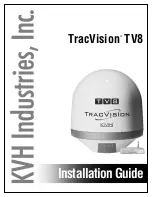
B
roadband Power Technology
,
3945
North 900 West, Pleasant View, UT 84414-1055 Ph: 801.732.0924 Fx: 801.732.0891
Website: http://www.bptec.com Email: [email protected]
1
A
ctive
R
eceiving
A
ntennas
Dressler Active Receiving Antenna
Installation Information
New Installation information:
(See page 4)
The ARA 60 and HDX 100 antennas operate very well when mounted at ground level. Low
mounting greatly reduces the possibility of the coax reacting with the RF signal to inadvertantly
increase the effective length of the monopole antenna and minimizes man made noise pickup by
the antenna and coax. Read more in the ARA 60 and HDX 100 mounting section on page 4.
Introduction:
The Dressler ARA "Active Receiving Antenna" products are an excellent investment for your shortwave
listening pleasure. Our customers routinely tell us that they consider them to be the best commercially
available "active" antenna product on the market. The ARA antennas are small, light and very easy to
install. Even indoors, they provide excellent performance across their entire band ranges without any
tuning. The ARA 60 compares favorably with long wire antennas in terms of signal strength. In addition,
the ARA products are "Electrically Short" and offer the advantage of receiving a lower level of
disturbances due to electrostatic discharge and other man made (QRM) noise. The ARA low profile also
offers wind resistance to 100 MPH, when mounted on a suitable structure.
All standard ARA models provide about 7-14 dB of gain and low noise figures which can enhance the
sensitivity of virtually any shortwave receiver. We now offer LMR-240 (Ultra-Flex) low loss cable as an
option for the ARA UHF products. The low loss cable typically increases signal sensitivity by about 6 dB*
as compared to using standard RG-58/U cable. The HDX models are designed to withstand a higher level
of ambient signal level and are best suite for urban locations with high ambient RF levels or any other site
in close proximity to high power broadcast or other communication transmission services. All UHF HDX
models are supplied with the LMR-240 low loss cable.
Dressler ARA products offer several models, all designed to provide you with the best possible reception
in two basic frequency ranges, 40 kHz - 60 MHz and 50 MHz - 2000 MHz. A mast-mounted preamplifier
(EWPA 5200) is offered for those using "Discone" or high gain antenna types for special applications. All
ARA products are connected in the same manner, using the same basic power supply and cabling
components.
The ARA products are designed to operate with telecommunication receivers and wideband scanner
receivers with coaxial antenna inputs. Portable receivers with the internal telescopic or loop antennas are
difficult to connect to the ARA products and may not offer the level of performance associated with the
ARA product name.
*Based on loss factors for a 40’ length of coax at 2 GHz.
LMR-240 - 4.6 dB
RG-58 - 11 dB
ARA 2000 shown


























